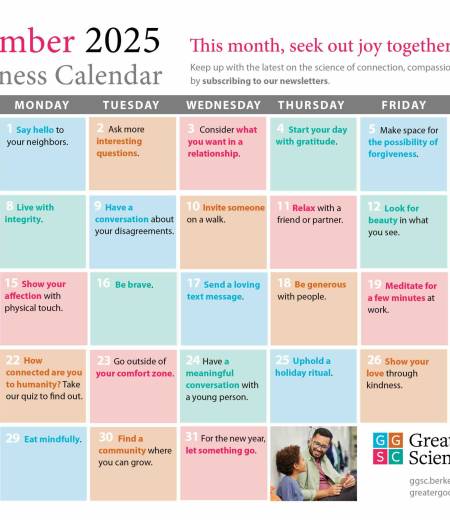My eyes fluttered open as I lay in bed. I had a strange suspicion that I was enjoying way more sleep than was my Monday-morning norm. Sure enough, my brain reminded me: I had wanted to be up at 5 a.m. to get a head start on a deadline…and it was now 6 a.m.

I jumped out of the bed, made breakfast for the kids, and packed lunch boxes in record time. Before my husband even made it out the door with our daughter, I made a mad dash to my office, turned on my computer, and began typing. Five minutes later, my 17-year-old son, who I thought was on his way to school, comes into my office mumbling something about missing the bus. I grabbed my purse and took him to school.
It wasn’t even 8 in the morning and my day had already gone to poo.
Despite my propensity toward optimism, there are days when everything has unequivocally gone to poo, no matter how hard I try to reframe events. Reclaiming control of days like this can be challenging. In fact, in our work at Wellbeing Works, we have observed that a number of workplace conflicts ensue due to employees who are unable to get their day back on track after morning setbacks.
The neurological underpinning of a day gone wrong is our old friend the stress response. That’s a series of biological and psychological processes that automatically begin when we encounter something stressful, like my son walking through the door and sucking up the only time I had to complete an important project. The stress response is useful when it helps us to face an immediate threat, but it often diminishes our capacity to reason, focus, and strategize. Ironically, those are the very functions we need to address the kinds of complex situations we face at home and work.
So, how can you get your day back on track after it’s gone south? How do we prevent a few early missteps from highjacking our goals? I’d like to offer you a four-part plan to shift your day after it’s gone to poo.
Step one: Activate the parasympathetic nervous system
The first step in resetting your day is to interrupt the stress response by activating your parasympathetic nervous system, which operates largely through the vagus nerve that runs from our brain to our intestine, forming a brain-gut connection. Thanks to that, most tools for activating the parasympathetic nervous system are rooted in some form of body work. Here are a few suggestions.
Breathwork: You may be familiar with the 4-7-8 breathing technique, where you inhale for a count of 4, hold your breath for a count of 7, and exhale for a count of 8. It’s a therapeutic strategy frequently offered to people who manage anxiety. But do you know why it works? Because the exhale is twice as long as the inhale, it can interrupt a stress response by activating the parasympathetic nervous system and lowering your heart rate (the opposite of what happens during fight or flight).
Emotional Freedom Technique (EFT): EFT—which is also called tapping—is an acupressure technique based on Chinese medicine that combines vocalization of feelings about the source of a stressor with applying light pressure on nine meridian points in the body. EFT has been found to have similar effects as breathwork by lowering the heart rate and blood pressure. It’s believed to work by sending signals to the amygdala that the threat has gone, calming its activity.
Get outside in nature: Immersing ourselves in nature can activate the parasympathetic nervous system in various ways. Have you ever tried grounding? That’s just putting your bare feet directly on the ground outside. Early studies on grounding suggest that it can have a deep calming effect, relaxing your muscles and grounding you in your surroundings instead of in your stressor.
Step two: Flood the body with feel-good hormones
Once we’ve stopped the stress response, the next step is to flood our body with some feel-good hormones to counteract the effects of the adrenaline and cortisol released during the stress response. Endorphins help us to reduce stress; serotonin helps us balance our mood and feel a greater sense of well-being; oxytocin can lower stress and makes us feel more connected to others. There are several ways we can increase these hormones in our bodies.
Exercise: The first and obvious way to flood our bodies with feel-good hormones is exercise. Research has found that cardiovascular exercise of moderate intensity for at least 30 minutes works best in generating the release of endorphins and serotonin. Great forms of exercise that meet this criteria are indoor or outdoor cycling, dancing, or a brisk walk.
Hug someone you love: Hugging someone you care about releases a slew of feel-good hormones like serotonin and oxytocin—and it reduces cortisol and adrenaline in the body, two common hormones released during a stress response. Finding a human or furry loved one and snuggling for a few minutes can do the trick and increase your sense of connection with someone you care about.
Have sex: While this may not always be the most convenient or accessible outlet to increase feel-good hormones during the day, if you’re able to have sex, then it’s a great way to increase endorphins (think activity) and oxytocin (think intimacy)—a repurposing of the “quickie”!
Step three: Triage
So, we’ve stopped the stress response and we’re feeling a little better now because we’ve increased our feel-good hormone levels. Now, we need to tackle the source of our stress. With our brain more fully back online—and our ability to focus, think, and strategize enhanced—we’re likely in a better position to manage the source of the stress.
The feeling that our day has gone to poo frequently stems from feeling like we’ve lost control of our day or that our day is demanding more of us than we have the resources to give. In these situations, it’s important to remind ourselves what resources we have in hand and what we can control.
Part of remembering what we do have control over involves letting go of some things. Feeling supersaturated? What can you let go of? I kid you not, I’ve fixed days gone to poo by clipping the low-hanging fruit, like abandoning my plan to return a book to the library and taking the 35-cent fine. Taking that small step freed up 30 minutes in my day.
Also, reminding ourselves of the resources we have can feel particularly empowering. Are you able to delegate, pull someone else in to help you, or pay for punctual support? Do it! The goal is to get yourself back into the driver’s seat of your life, as opposed to letting a stress response run your day.
Step four: Set yourself up for success the next day
An often overlooked aspect of reviving a day gone to poo is setting yourself up for success the next day. Have you ever had the experience of having not one but multiple days go to poo in succession, or just in close range of each other? The reason is that after undergoing a stress response, our amygdala is excited and more actively looking for other potential threats. While we might have stopped the stress response, that alertness is still there, and it’s likely even more sensitive than previously.
One of the best ways to truly calm the amygdala is rest. But not just any type of rest. Saundra Dalton-Smith, physician and author of Sacred Rest: Recover Your Life, Renew Your Energy, Restore Your Sanity, suggests that there are seven types of rest: physical, mental, spiritual, emotional, sensory, social, and creative. The question to ask yourself at the end of your day is: In which of these areas did I experience a deficit?
“When I think of the word rest, I think of it in the form of restorative activities [not just abstention from things],” says Dalton-Smith. “What are the things that we can do to pour back into the areas where we feel depleted?” Tending to your rest allows you to not start the next day in a deficit.
As for me and my day gone to poo, the client ended up emailing to push the deadline back due to internal matters, but by the time I received the email I had already worked three steps of my four-part plan and was feeling much better. Poo be gone!







Comments